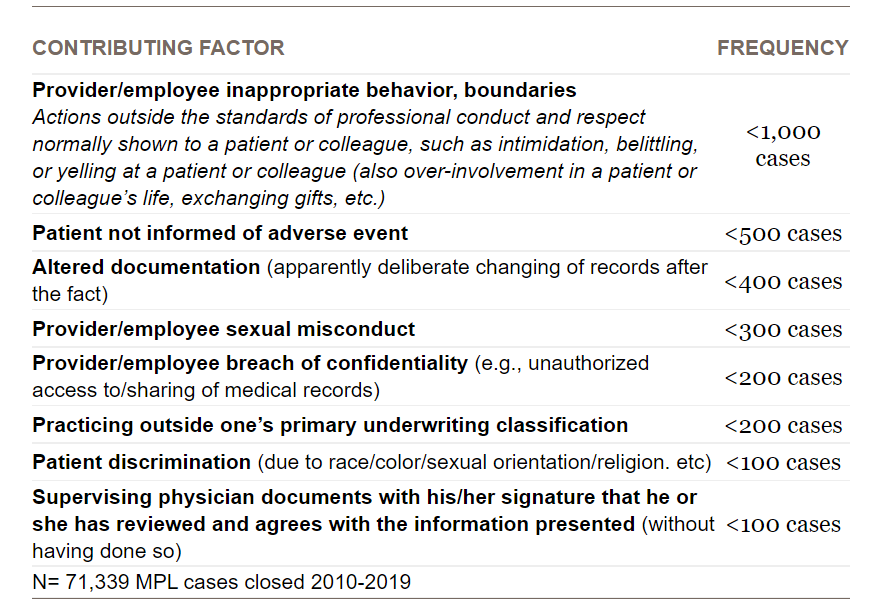Newsletter
A Very Short Naughty List
Dec 30, 2021
A common misunderstanding about medical malpractice claims and lawsuits is that they stem from egregious and aberrant behavior by individuals impervious to the harm they’ve caused. That notion is amplified when plaintiffs’ attorneys turn to damning language in their assertions and allegations, seeding doubt about a defendant’s character and morals in concert with the description of his/her clinical judgment or missteps.
A Candello analysis of more than 70,000 medical professional liability (MPL) cases closed from 2010–2019 casts a booming Bah Humbug on that depiction. The contributing factor codes most likely to flag purposely inappropriate acts or behaviors appear in fewer than one percent of those cases. For the entire set of 71,339 closed cases, 257,924 contributing factors* were assigned (an average of 3.6 per case). Just 2,121 of those factors were among the following categories:

The above codes may well identify problematic behavior by individual defendants, but they represent just two percent of the physicians, nurses, and other providers named in the full set of cases. Unfortunately, most of what makes it to the public newsfeed are the (rare) salacious stories. For the vast majority of defendants—as well as health care providers who’ve had a patient safety near miss or an MPL allegation—that experience is personally and professionally devastating. For many of these defendants who have devoted their lives to caring for others, the additional trauma of being unfairly pooled with a handful of miscreants is a crushing burden. With extremely rare exceptions, the defendants in malpractice cases deserve and need our understanding and respect.
*The Candello taxonomy includes >250 individual contributing factor codes
Latest News from CRICO
Teleradiology Medical Malpractice Cases


Inform Safer Medical Oncology Practice with Lessons from Medical Malpractice Claims
Characterizing Malpractice Cases Involving Emergency Department Advanced Practice Providers, Physicians in Training, and Attending Physicians

